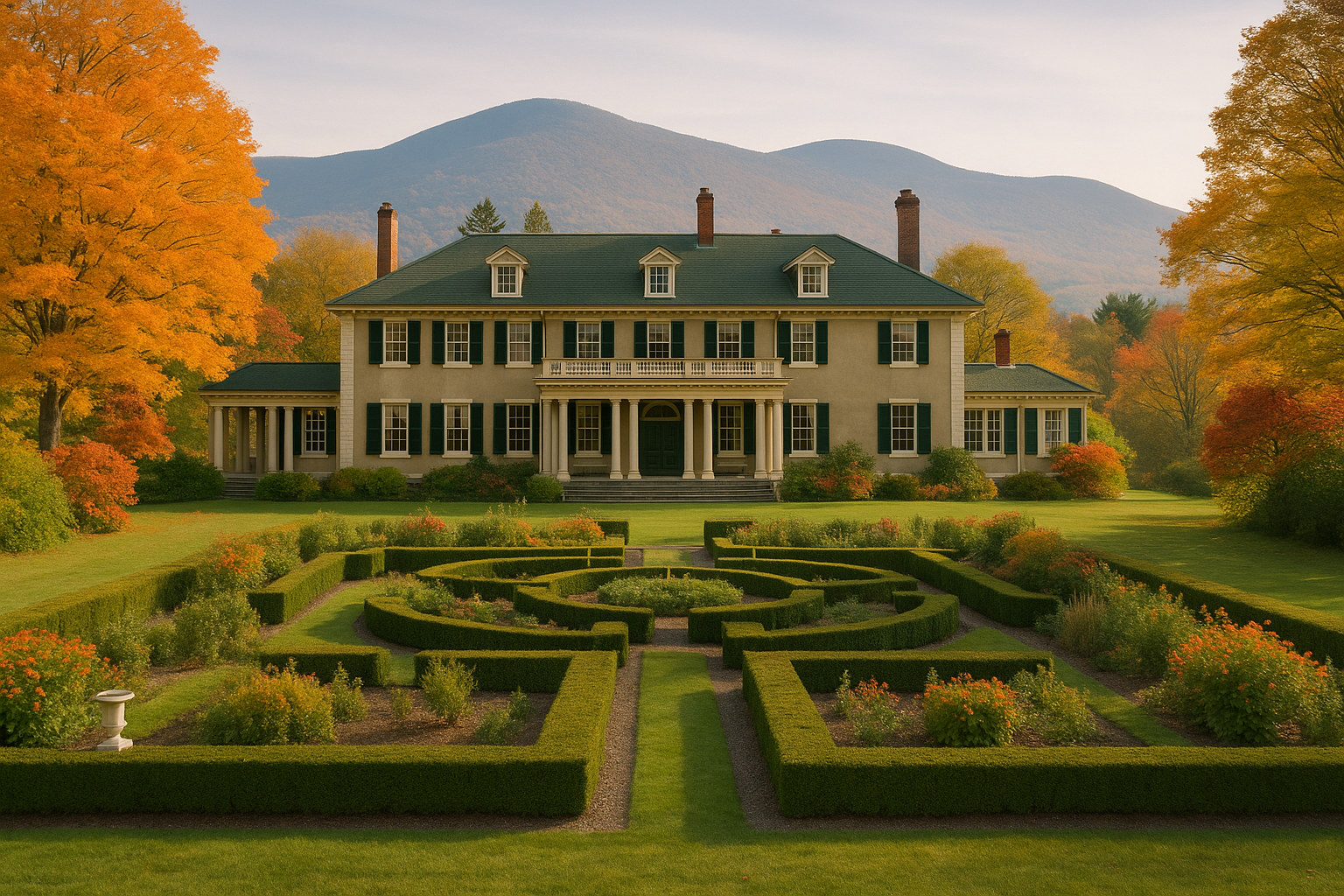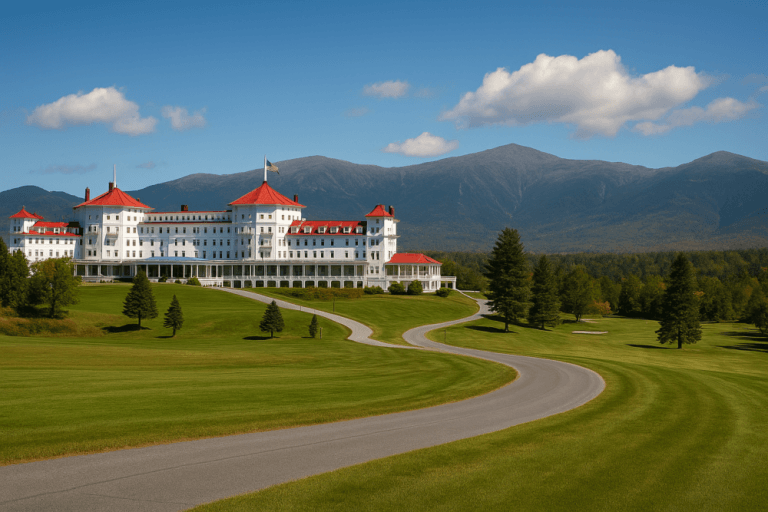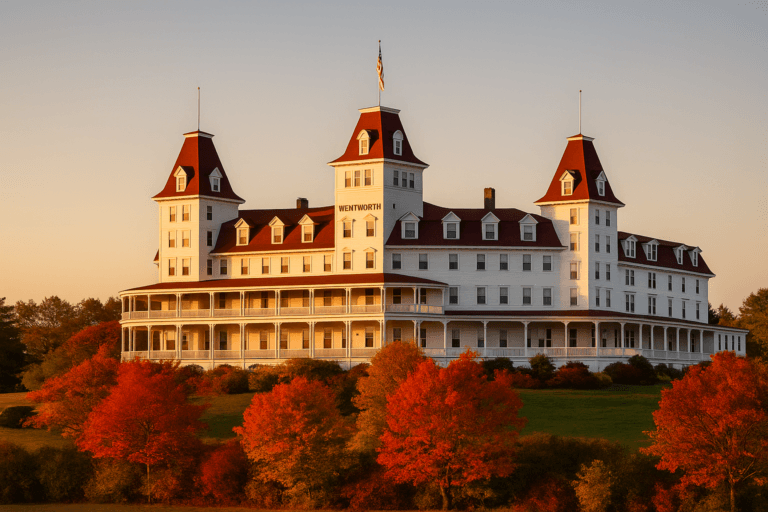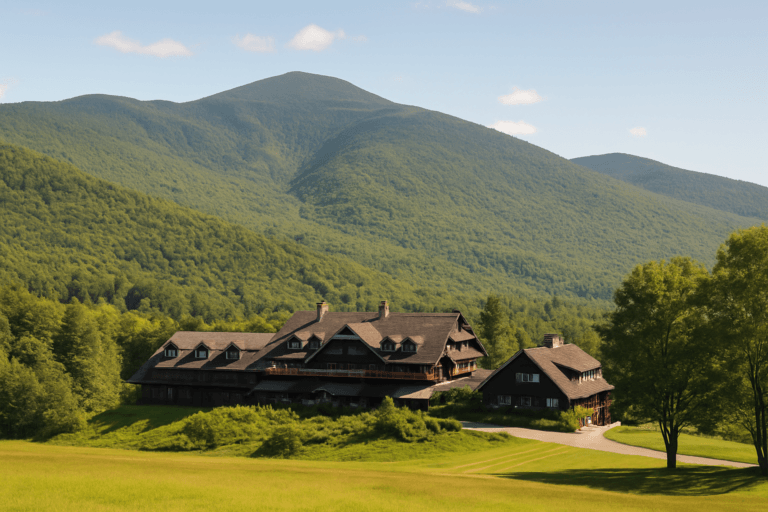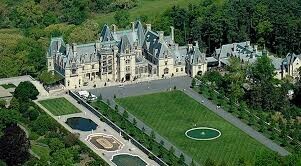Hildene—The Lincoln Family Home In Manchester, Vermont
A Presidential retreat, a working farm, and a living legacy in the heart of the Green Mountains.
Hildene is far more than a beautiful historic home—it’s a deeply personal and enduring link to one of America’s most significant families. Nestled in the rolling hills of Manchester, Vermont, this estate was built in 1905 by Robert Todd Lincoln, the only child of President Abraham Lincoln to survive into adulthood. Today, it stands as a powerful tribute to legacy, stewardship, and quiet resilience.
While Abraham Lincoln never set foot on the property, Hildene remains one of the most intimate sites associated with the Lincoln family. For Robert, it was a place of retreat from public life and business, a summer estate where he could reflect and build something lasting. The name “Hildene,” derived from old English meaning “hill and valley with a stream,” reflects both its landscape and its spirit—a blend of New England serenity and Gilded Age vision.
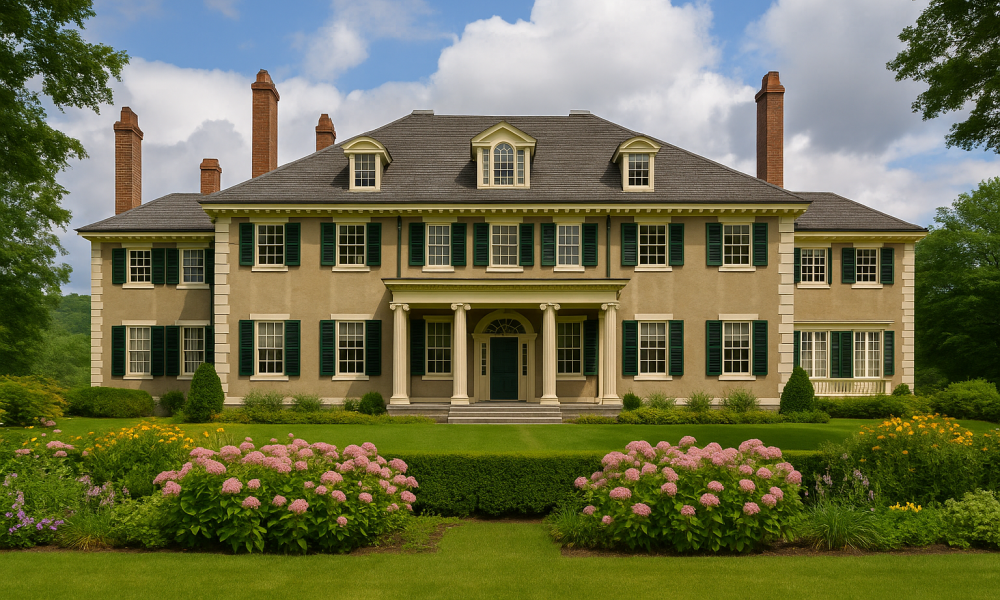 The Hildene mansion stands gracefully atop its hillside perch in Manchester, Vermont, blending Georgian Revival symmetry with serene New England landscapes.
The Hildene mansion stands gracefully atop its hillside perch in Manchester, Vermont, blending Georgian Revival symmetry with serene New England landscapes.
🏛️ Architectural Grace: Georgian Revival Elegance
The main residence at Hildene is a striking example of Georgian Revival architecture, characterized by its symmetrical layout, hipped roof, and classic Palladian windows. A wide veranda stretches across the front of the house, framing commanding views of the Battenkill Valley and the distant Taconic Mountains. From a distance, the house appears stately but restrained, embodying the dignity associated with the Lincoln name.
Step inside, and the refinement continues. The 22-room mansion has been carefully preserved to reflect the early 20th-century lifestyle of its original occupants. Many of the furnishings are original to the Lincoln family, including Robert’s personal desk, family portraits, and heirlooms like President Lincoln’s famed stovepipe hat. The rooms are laid out in a style meant for comfort as well as formality—gracious but not ostentatious.
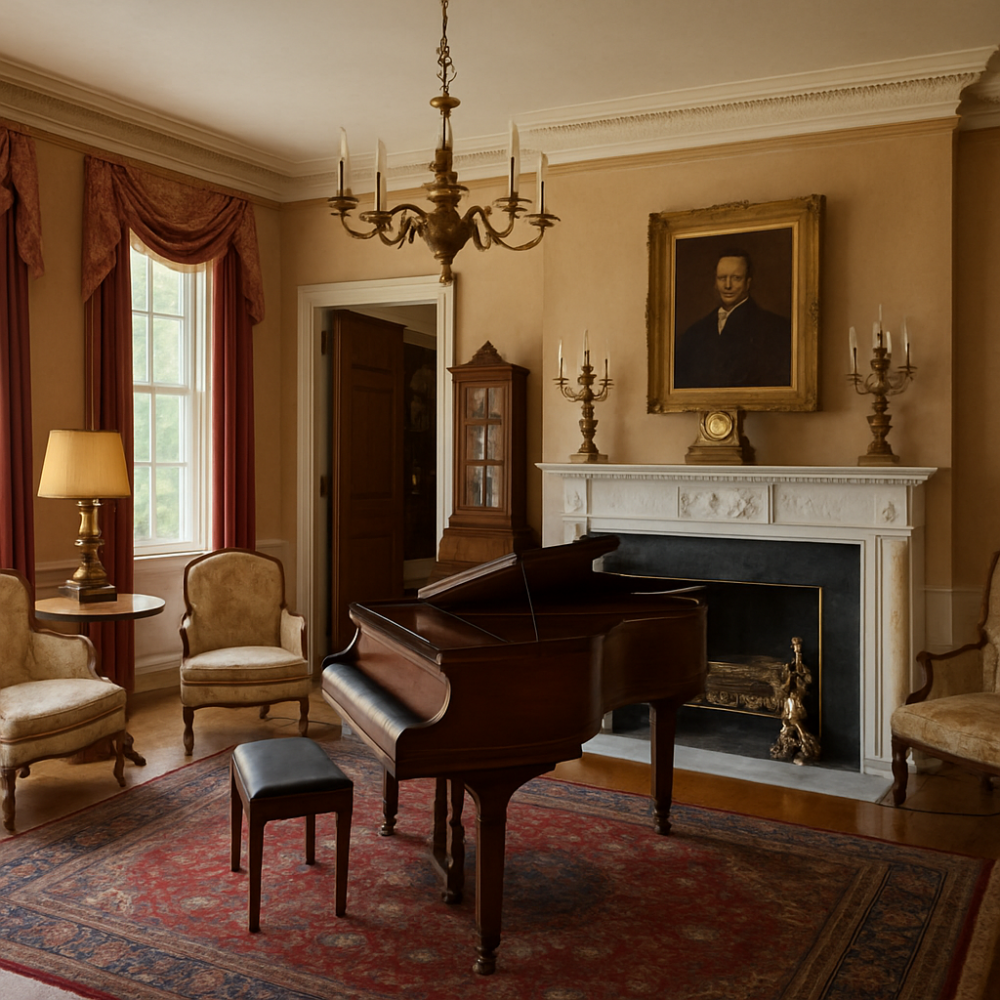 Inside Hildene’s formal parlor, visitors can glimpse the elegance and domestic charm of early 20th-century upper-class living.
Inside Hildene’s formal parlor, visitors can glimpse the elegance and domestic charm of early 20th-century upper-class living.
The drawing room and dining room feature finely detailed plasterwork, original wood trim, and period-appropriate wallpapers. The library, perhaps the most personal room in the home, houses volumes that span politics, philosophy, and family history. Throughout, visitors find thoughtful touches that reflect Robert’s deep sense of duty, order, and lineage.
🌿 A Landscape of Purpose and Beauty
Set on more than 400 acres, the Hildene estate embraces its landscape as part of its identity. The property unfolds across a mosaic of rolling meadows, woodlands, and working farmland. Everything from the driveway approach to the positioning of the home atop a gentle rise was designed to celebrate the surrounding natural beauty.
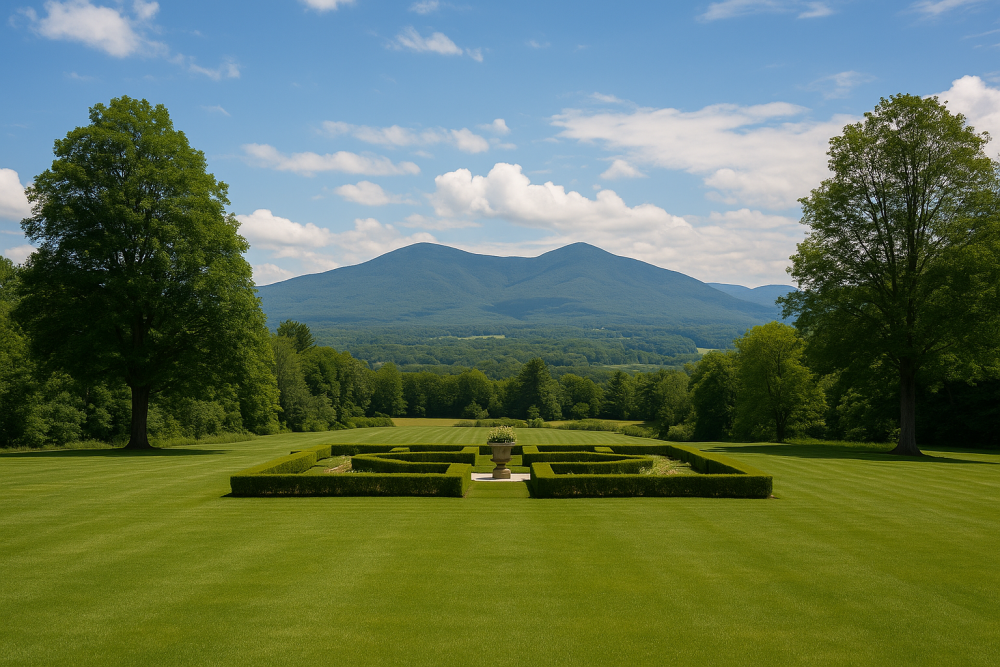 Hildene’s landscaped grounds offer a breathtaking view of Vermont’s Green Mountains, blending cultivated beauty with natural grandeur.
Hildene’s landscaped grounds offer a breathtaking view of Vermont’s Green Mountains, blending cultivated beauty with natural grandeur.
One of the estate’s most stunning features is the formal garden, which extends directly behind the house in the shape of a stained-glass cathedral window. Originally designed by Robert Todd Lincoln’s daughter, Jessie Lincoln, the garden reflects a mix of English and American influences, with neatly trimmed boxwood hedges outlining vibrant beds of peonies, phlox, delphinium, and heritage roses. The garden is a living painting—symmetric, fragrant, and seasonally transformed.
Surrounding the garden are walking paths, apple orchards, and wooded trails, many of which offer scenic overlooks or quiet places to rest and reflect. The landscape reflects not just an aesthetic choice, but a value system: beauty in service to tranquility, and preservation in harmony with nature.
🧭 Historical Relevance and Family Legacy
Robert Todd Lincoln was more than Abraham Lincoln’s son—he was a significant public figure in his own right. He served as Secretary of War under Presidents Garfield and Arthur, and later as Minister to the United Kingdom. In business, he became the president of the Pullman Company, one of the most influential railcar manufacturers of the time.
 Robert Todd Lincoln, the only surviving son of President Abraham Lincoln, pictured in front of his Vermont estate, Hildene. Built in 1905, Hildene served as his summer home and remains a preserved historical site reflecting his legacy
Robert Todd Lincoln, the only surviving son of President Abraham Lincoln, pictured in front of his Vermont estate, Hildene. Built in 1905, Hildene served as his summer home and remains a preserved historical site reflecting his legacy
At Hildene, Robert sought to balance these very public roles with a quieter, more private life. The estate became a place of generational continuity. It remained in the Lincoln family until 1975, when it passed into the care of a local nonprofit formed to preserve and share its history. Today, the estate is operated by The Friends of Hildene, who have restored the home and grounds to reflect their appearance in the early 20th century.
Importantly, Hildene’s preservation is not just about nostalgia—it’s about interpreting a chapter of American life that bridges post-Civil War history, industrialization, and the rise of social conscience in the Progressive Era. It is one of the few places in the country where visitors can trace the personal legacy of the Lincolns beyond the tragedy of 1865.
🪞 A Home That Reflects Quiet Strength
Though Hildene never hosted a president, it remains deeply presidential in spirit. The estate’s enduring appeal lies in its quiet strength, its blend of personal and national history, and its deliberate refusal to indulge in grandeur for its own sake. Every room, every view, and every artifact offers a subtle but powerful invitation: to reflect on who we were, who we are, and what we choose to preserve.
Today, Hildene stands not just as a monument to a family, but as a living reflection of the values Abraham Lincoln espoused—honesty, humility, and purpose. The house speaks in calm tones, but its story resonates deeply. You can learn more about Hildene and its ongoing preservation efforts here.

